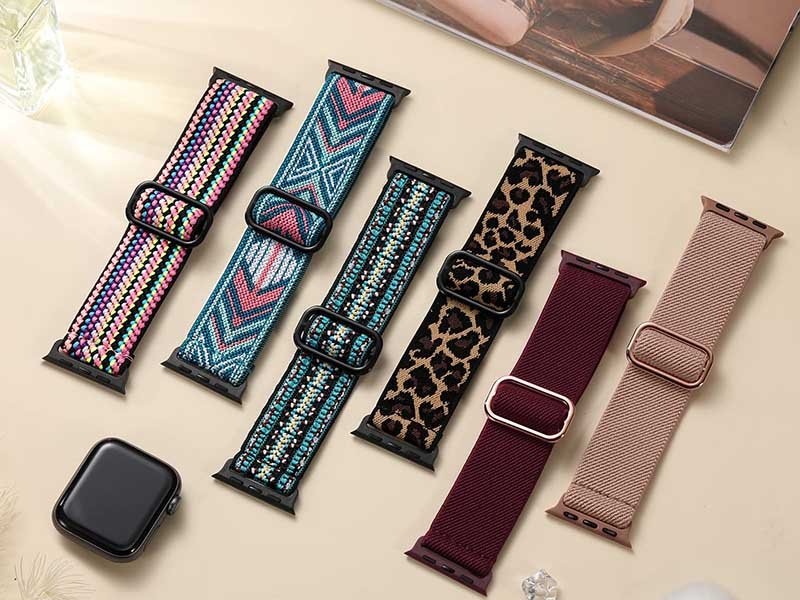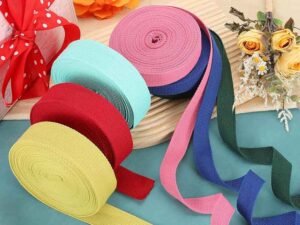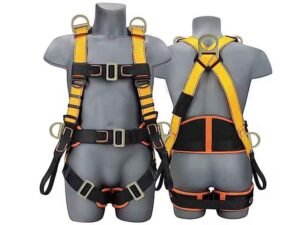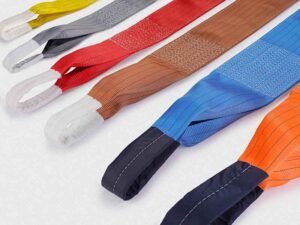Choosing the right watch strap can transform your timepiece from a simple accessory into a personal statement of style and comfort. Whether you’re upgrading a classic dress watch or customizing a rugged field piece, understanding the range of strap materials—from supple leather to hard-wearing nylon—is key. In this guide, we’ll explore “What Are the Different Types of Watch Straps and How to Choose the Best One?” so you can confidently select a band that matches your lifestyle, budget, and aesthetic preferences.
Watch straps come in a variety of materials—leather, metal, nylon, rubber, and fabric—each offering unique benefits in style, durability, and comfort. Leather straps suit formal looks, metal bracelets offer durability, while NATO and rubber bands excel in active settings. Choosing the right strap depends on activity level, climate, and design goals, ensuring your watch remains both functional and stylish.
Imagine this: you’re preparing for an important meeting, but your worn-out leather strap looks tired under the boardroom lights. That’s when you realize the power of a fresh, well‑chosen strap—one that not only feels great on your wrist but also reinforces your professional image. Let’s dive in and find the perfect band for every occasion.
What Are the Most Common Watch Strap Materials?
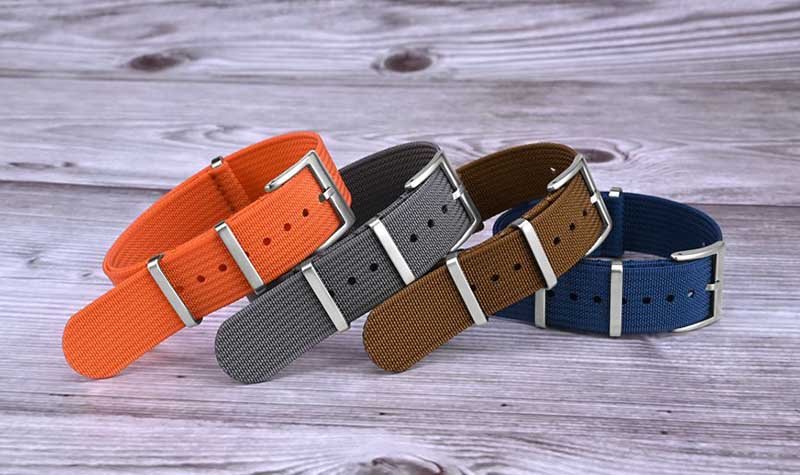
The most common watch strap materials are leather, stainless steel, nylon, rubber (silicone), and canvas. Leather offers classic elegance, stainless steel delivers durability and luxury, nylon (NATO) provides resilience for outdoor use, rubber excels in water resistance, and canvas balances comfort with a casual look.
When shopping for a new watch strap, you’ll encounter five primary materials—each with its own history, strengths, and weaknesses. Let’s break them down:
Leather Straps
- Types: Full-grain, top-grain, bonded, and exotic hides (e.g., alligator).
- Advantages: Luxurious feel, molds to the wrist, classic aesthetic.
- Drawbacks: Sensitive to moisture, requires maintenance, may show wear over time.
Stainless Steel Bracelets
- Types: Oyster, Jubilee, Milanese mesh, and multi-link designs.
- Advantages: Extremely durable, water-resistant, often integrated into case design.
- Drawbacks: Heavier, can pinch hairs, less forgiving on small wrist sizes without precise sizing.
Nylon/NATO Straps
- Types: Single-pass, two-piece (“Z” pass), seatbelt weave.
- Advantages: Inexpensive, quick-dry, replaceable on the go, vibrant color options.
- Drawbacks: Less refined for formal wear, edges may fray over time.
Rubber/Silicone Bands
- Types: Smooth, waffle-patterned, diving-specific with water drainage.
- Advantages: Ideal for sports and water activities, hypoallergenic, easy to clean.
- Drawbacks: Can trap heat, may degrade under UV exposure unless high‑grade.
Canvas and Fabric Straps
- Types: Twill canvas, sailcloth, ballistic nylon.
- Advantages: Casual look, breathable, often eco-friendly recycled options.
- Drawbacks: Prone to staining, absorbent, require periodic washing.
Material Comparison Table
| Material | Style Suitability | Durability | Water Resistance | Maintenance |
|---|---|---|---|---|
| Leather | Dress & Casual | Moderate | Low | High |
| Steel | Dress & Sport | Very High | Excellent | Low |
| Nylon/NATO | Casual & Sport | High | Good | Low |
| Rubber | Sport & Diving | High | Excellent | Very Low |
| Canvas | Casual & Outdoor | Moderate | Fair | Medium |
Understanding these core materials sets the foundation for matching strap choice to both aesthetic and practical demands, ensuring your watch looks and feels just right.
Which Watch Strap Style Matches Your Lifestyle?
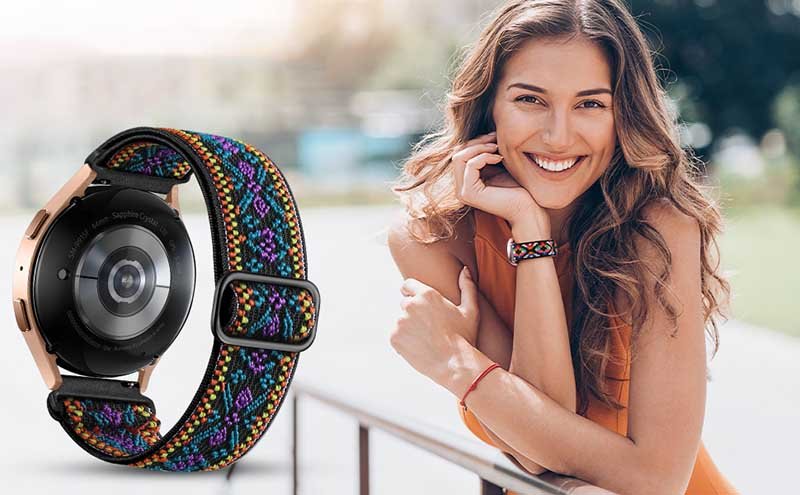
Formal occasions pair best with leather or slim Milanese mesh bracelets; active lifestyles benefit from durable nylon or rubber straps; everyday casual wear suits canvas or standard metal links. Match strap style to your daily activities to balance comfort, formality, and longevity.
Selecting a strap isn’t just about color—it’s about aligning function with daily habits. Let’s examine typical lifestyles and the straps that complement them:
Corporate Professional
- Ideal Straps: Leather (full‑grain black or brown), Milanese mesh.
- Why It Works: These straps are slim under cuffs, convey sophistication, and pair seamlessly with suits.
- Considerations: Choose calfskin for affordability or exotic leather for prestige; ensure regular conditioning to avoid cracking.
Outdoor Enthusiast
- Ideal Straps: NATO, ballistic nylon, rubber dive straps.
- Why It Works: They resist water, dry quickly, and handle dirt and sweat. Vibrant NATO patterns also add a touch of personal flair.
- Considerations: Opt for coated nylon to reduce fraying; look for silicone blends with UV protection.
Everyday Casual
- Ideal Straps: Canvas, cotton‑blend fabrics, brushed stainless steel.
- Why It Works: Comfortable for all-day wear, breathable, and versatile enough for jeans or business casual.
- Considerations: Fabric straps may require occasional washing; brushed steel hides scratches better than polished links.
Weekend Athlete
- Ideal Straps: Rubber, FKM (“fluoro rubber”), silicone-coated nylon.
- Why It Works: Sweat‑resistant, hypoallergenic, and easy to rinse post‑workout.
- Considerations: Look for quick‑release spring bars to swap straps without tools, and perforated designs for airflow.
Luxury Collector
- Ideal Straps: Exotic leathers (alligator, ostrich), high‑polish multi‑link steel.
- Why It Works: These materials enhance the perceived value of high‑end watch heads.
- Considerations: Verify traceability for exotic hides; invest in professional strap installation to protect delicate lugs.
By mapping strap styles to real‑world demands, you’ll spend less time fidgeting and more time showcasing your watch’s best features.
How Do Different Strap Materials Affect Comfort and Durability?
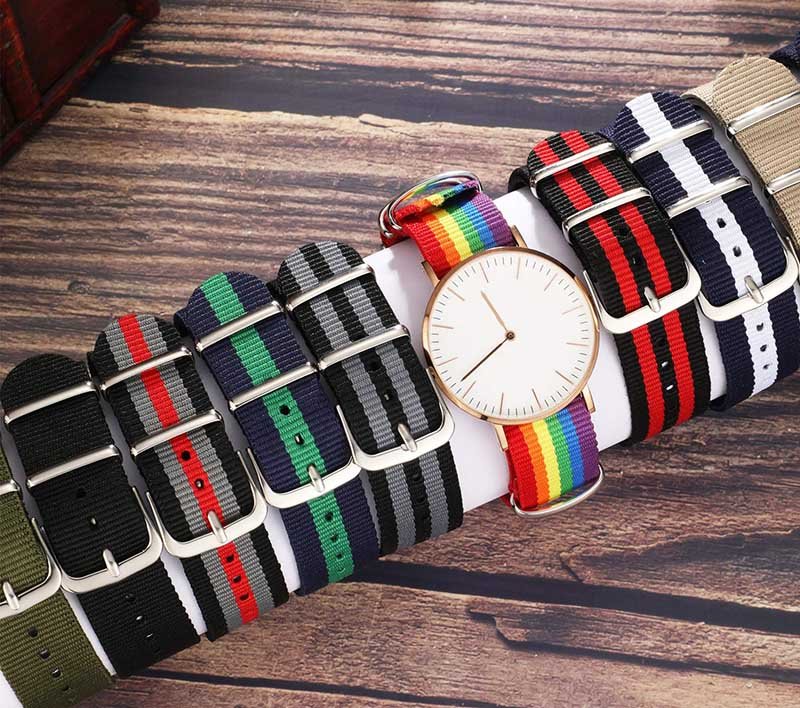
Comfort and durability vary by material: leather softens over months but needs care; steel bracelets last decades but feel heavier; nylon dries quickly yet can be stiff initially; rubber offers flexibility but may degrade under UV; canvas breathes well but absorbs moisture.
The interplay between comfort and longevity is central to strap selection. Here’s a deeper look:
Leather: The Comfort Curve
- Comfort: Initially stiff; breaks in over several weeks, molding to the wrist’s contours.
- Durability: High‑end full‑grain leather lasts years if conditioned and kept dry; bonded leather may delaminate within months.
- Maintenance Tips: Apply a light coat of leather conditioner every 3–6 months; avoid prolonged exposure to water or direct sunlight.
Stainless Steel: Weight vs. Wear
- Comfort: Cold to the touch initially; weight can feel substantial but often balanced by well‑designed links. Micro‑adjustment on clasps enhances fit.
- Durability: Exceptional resistance to scratches and corrosion; 316L and 904L steels are industry standards for longevity.
- Maintenance Tips: Ultrasonic cleaning for deep grime removal; polish lightly to restore shine without removing material.
Nylon/NATO: Fast‑Break‑In
- Comfort: Firmer weave at first; quickly relaxes after a few wears. Breathable, even in humid environments.
- Durability: Good tensile strength; edges may fray at hardware contact points.
- Maintenance Tips: Machine‑wash in a mesh bag or hand‑wash with mild soap; air‑dry flat to avoid warping.
Rubber/Silicone: Flexibility vs. Degradation
- Comfort: Soft and pliable from day one; ideal for active use and water sports.
- Durability: High‑grade FKM and vulcanized rubber resist oils and ozone; budget silicones may stiffen and crack.
- Maintenance Tips: Rinse after saltwater exposure; avoid citrus‑based cleaners that can degrade polymers.
Canvas/Fabric: Breathable Softness
- Comfort: Lightweight and airy; ideal for summer wear.
- Durability: Subject to staining and gradual abrasion; high‑density weaves last longer.
- Maintenance Tips: Spot‑clean stains promptly; deep‑wash no more than quarterly to preserve structure.
Case Study: Material Performance Over 12 Months
| Material | Initial Comfort Rating (1–5) | Comfort After 3 Months (1–5) | Expected Lifespan |
|---|---|---|---|
| Leather | 2 | 5 | 2–5 years |
| Steel | 3 | 3 | 10+ years |
| NATO | 2 | 4 | 1–3 years |
| Rubber | 5 | 5 | 3–5 years |
| Canvas | 4 | 4 | 1–2 years |
Balancing comfort with durability ensures your watch remains both a pleasure to wear and a lasting accessory.
Do Leather Watch Straps Require Special Maintenance?
Yes—leather straps need conditioning every 3–6 months, kept dry, and occasionally wiped with a damp cloth. Avoid submersion, extreme temperatures, and harsh chemicals to preserve flexibility and prevent cracking.
Leather watch straps evoke timeless elegance but demand mindful care to maintain their beauty and lifespan:
Conditioning & Cleaning
- Why It Matters: Leather is porous; oils from skin and the environment can dry it out. Conditioning replenishes natural fats and oils.
- How to Do It: Use a pH‑neutral leather conditioner. Apply sparingly with a soft cloth, allow absorption for 10–15 minutes, then buff off excess. Repeat biannually or quarterly in dry climates.
Water Exposure
- Risk: Prolonged contact with sweat or moisture leads to staining, odor, and eventual breakdown of fibers.
- Prevention: Remove leather straps before swimming or intense workouts. If wet, pat dry with a lint‑free cloth and air‑dry away from heat sources.
Storage
- Best Practices: Store flat or on a curved watch pillow to preserve shape. Keep in a cool, ventilated area—avoid airtight boxes that trap moisture.
- Tip: Use silica gel packets in storage boxes to regulate humidity.
Rotating Straps
- Why Rotate: Allow straps to rest and dry between wears, extending overall life.
- Implementation: Maintain a rotation of at least three straps; wear each no more than two days consecutively.
Professional Care
- When to Seek Help: Deep stains, structural damage, or odor issues may benefit from a professional leather cleaner specializing in accessories.
- Cost vs. Benefit: Professional cleaning typically runs $20–$50 per strap but can add years to a high‑end leather band.
By integrating these maintenance steps into your routine, you’ll safeguard both the appearance and structural integrity of your leather straps.
Are Metal Bracelets More Durable Than Fabric Straps?
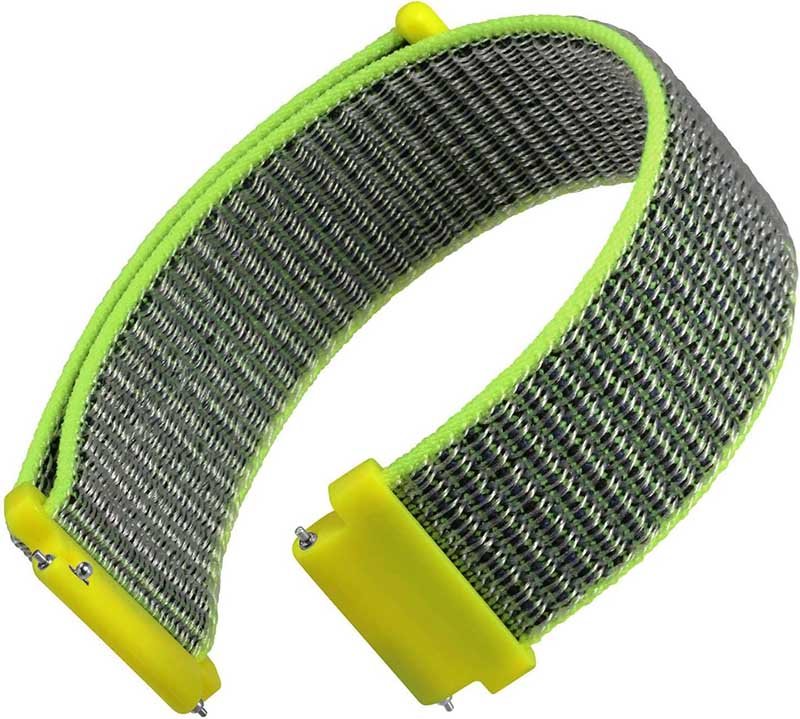
Generally, metal bracelets outlast fabric straps—stainless steel resists wear, corrosion, and UV damage, while fabric can fray, stain, and degrade. However, high‑quality ballistic weaves and treated fabrics narrow the gap, offering substantial durability with a different aesthetic.
Metal and fabric straps each present unique durability profiles. Let’s compare critical factors:
Wear Resistance
- Metal: Stainless steel grades like 316L and 904L resist scratches and dents; hardened links maintain shape under stress.
- Fabric: Even heavy‑duty weaves (e.g., Cordura) will eventually show signs of abrasion at contact points—especially around hardware.
Corrosion & UV Exposure
- Metal: Virtually immune to UV; corrosion only occurs in extreme chloride environments (e.g., seawater) without proper maintenance.
- Fabric: UV exposure weakens polymers over time; untreated nylon or canvas straps may fade and lose tensile strength.
Load & Tear Strength
- Metal: At link failure, a single link may break, but redundancy in multi‑link bracelets often prevents catastrophic loss.
- Fabric: A single tear can compromise the entire strap; high‑density weaves and reinforced stitching improve resilience.
Flexibility & Repair
- Metal: Dents can sometimes be reshaped by a jeweler; severely stretched links require full replacement.
- Fabric: Easier to repair with stitching or edge‑binding tape; some enthusiasts sew custom ends to extend strap life.
Weight & Comfort Balance
- Metal: Heavier on wrist—comfortable for many, but may cause fatigue on smaller wrists.
- Fabric: Lightweight, breathable, and less heat-conductive, making them ideal for hot or humid climates.
Durability Comparison Chart
| Feature | Metal Bracelet | Fabric Strap |
|---|---|---|
| Scratch Resistance | Excellent | Fair |
| UV Resistance | Excellent | Poor to Fair |
| Water Damage | Minimal | High |
| Repairability | Moderate | High |
| Weight | Heavy | Light |
Ultimately, if longevity under harsh conditions is your priority, metal bracelets lead the pack. For comfort and style flexibility, premium fabrics provide a compelling alternative.
Is a NATO Strap Suitable for Formal Occasions?
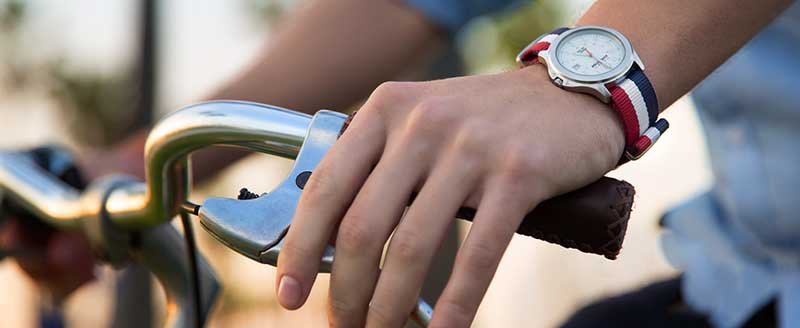
Traditionally casual, NATO straps can work in semi-formal settings when chosen in muted colors (black, navy) and finer weaves. However, they may clash with ultra-formal dress codes that favor leather or metal bracelets.
NATO straps—born from military utility—have evolved into a trendy accessory. Here’s how they fit into formal contexts:
Origins & Evolution
- History: Initially issued to British soldiers in the 1970s, NATO straps prioritized durability and security.
- Modern Adoption: Designers introduced refined seat‑belt weaves and subdued palettes to bridge the gap toward smarter attire.
Color & Weave Selection
- Muted Hues: Solid black, deep navy, and dark gray minimize visual contrast and integrate with formal suits.
- Fine Weave: Seat‑belt nylon (a finer weave) offers a sleeker texture than thick military‑grade straps.
Hardware Choice
- Polished vs. Brushed: Opt for polished or matching metal hardware to echo dress watch cases and cufflinks.
- Minimalist Buckles: Slim, flat buckles reduce bulk under shirt cuffs.
Layering & Styling Tips
- Under Cuffs: Ensure the strap doesn’t add extra thickness; tuck excess length neatly under keepers.
- Contrast Control: Pair dark straps with dark suits; avoid high‑contrast stripes that draw too much attention.
When to Avoid
- White-Tie Events: Ultra-formal black‑tie and white‑tie dress codes demand classic leathers or discreet metal bracelets.
- Heirloom Watches: Vintage dress watches often look best on period‑correct leather.
By carefully selecting fabric quality, color, and hardware, you can discreetly incorporate a NATO strap into elevated dress settings—without compromising elegance.
How to Measure and Adjust Your Watch Strap Size?
Measure wrist circumference with a soft tape, then subtract 2–3 mm for a snug fit. For bracelets, use micro‑adjustments on the clasp or add/remove links. For straps, punch holes or use a folding clasp to fine‑tune fit.
A perfectly fitted strap enhances comfort and prevents premature wear. Follow these steps:
Wrist Measurement
- Tools Needed: Soft measuring tape or strip of paper and ruler.
- Technique: Wrap around just above the wrist bone—where the watch sits. Record the measurement in millimeters.
Calculating Strap Length
- Leather & Fabric Straps: Manufacturers list strap lengths (e.g., 120/80 mm). Match total strap length (plus watch head) to wrist size ±2–3 mm for comfort.
- Metal Bracelets: Use wrist measurement to determine how many links to remove; account for clasp length.
Micro‑Adjustment & Holes
- Deployant Clasps: Often offer 2–3 mm of micro‑adjustment—use these for daily comfort tweaks.
- Punching Holes: Leather straps can be gently adjusted by adding holes with a leather punch—limit to two extra holes for integrity.
Link Removal
- Tools: Spring‑bar tool or pin pusher for removable links.
- Process: Identify “half‑links” for smaller wrist swings; remove evenly from both sides of clasp to center the watch.
Testing & Fine‑Tuning
- Snugness Check: The strap should stay in place without digging into skin or leaving marks.
- Movement Allowance: A finger should slide comfortably between strap and wrist.
Sizing Reference Table
| Wrist Circumference | Recommended Strap (mm) |
|---|---|
| 150–165 | 115/75 or 120/80 |
| 165–180 | 120/80 or 125/85 |
| 180–195 | 125/85 or 130/90 |
| 195+ | 130/90 or custom lengths available |
With accurate measurements and minor adjustments, your watch will sit perfectly—delivering comfort and style in equal measure.
Ready to Customize Your Perfect Strap?
From luxurious leather to rugged nylon, Szoneier’s 18+ years of expertise in webbing and accessory manufacturing ensures we can craft the ideal watch strap for your needs. Whether you require custom widths, bespoke colors, or specialized end fittings, our low‑MOQ, fast sampling, and 100% quality guarantee make the process seamless.

